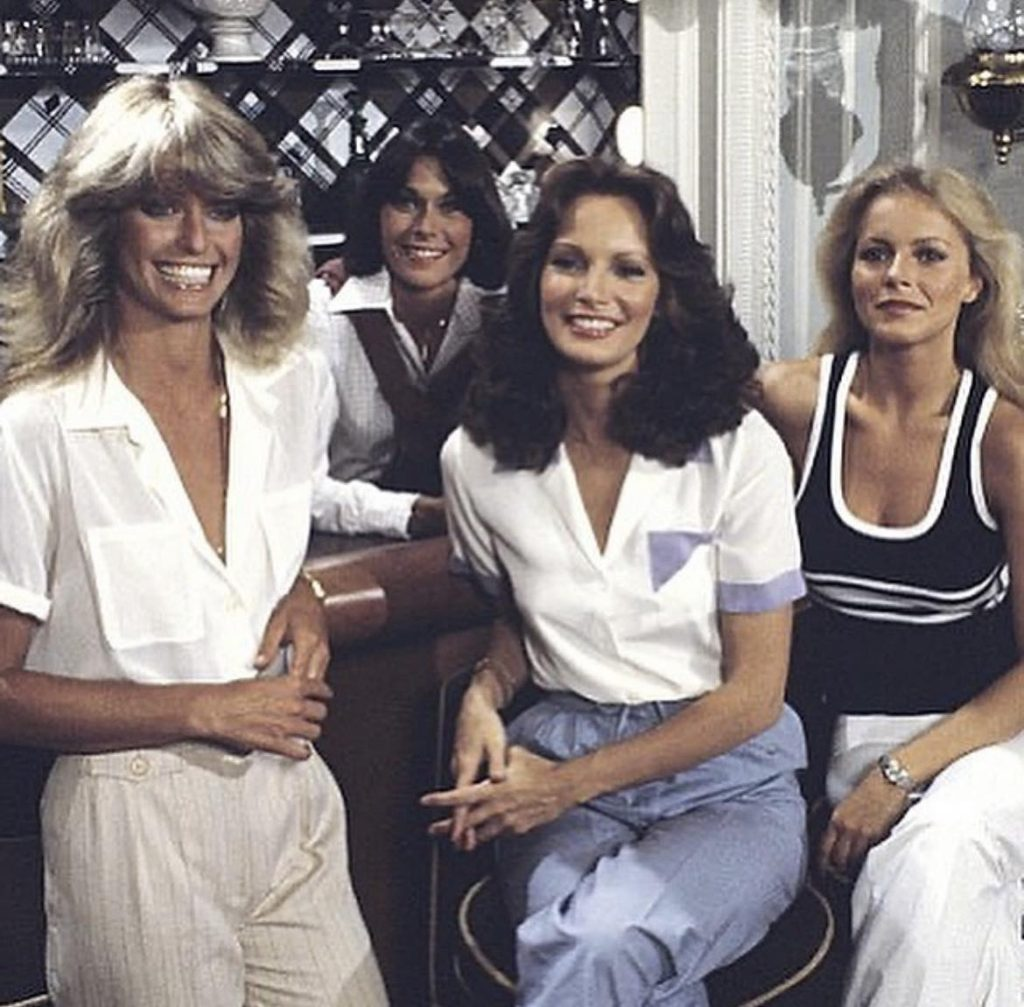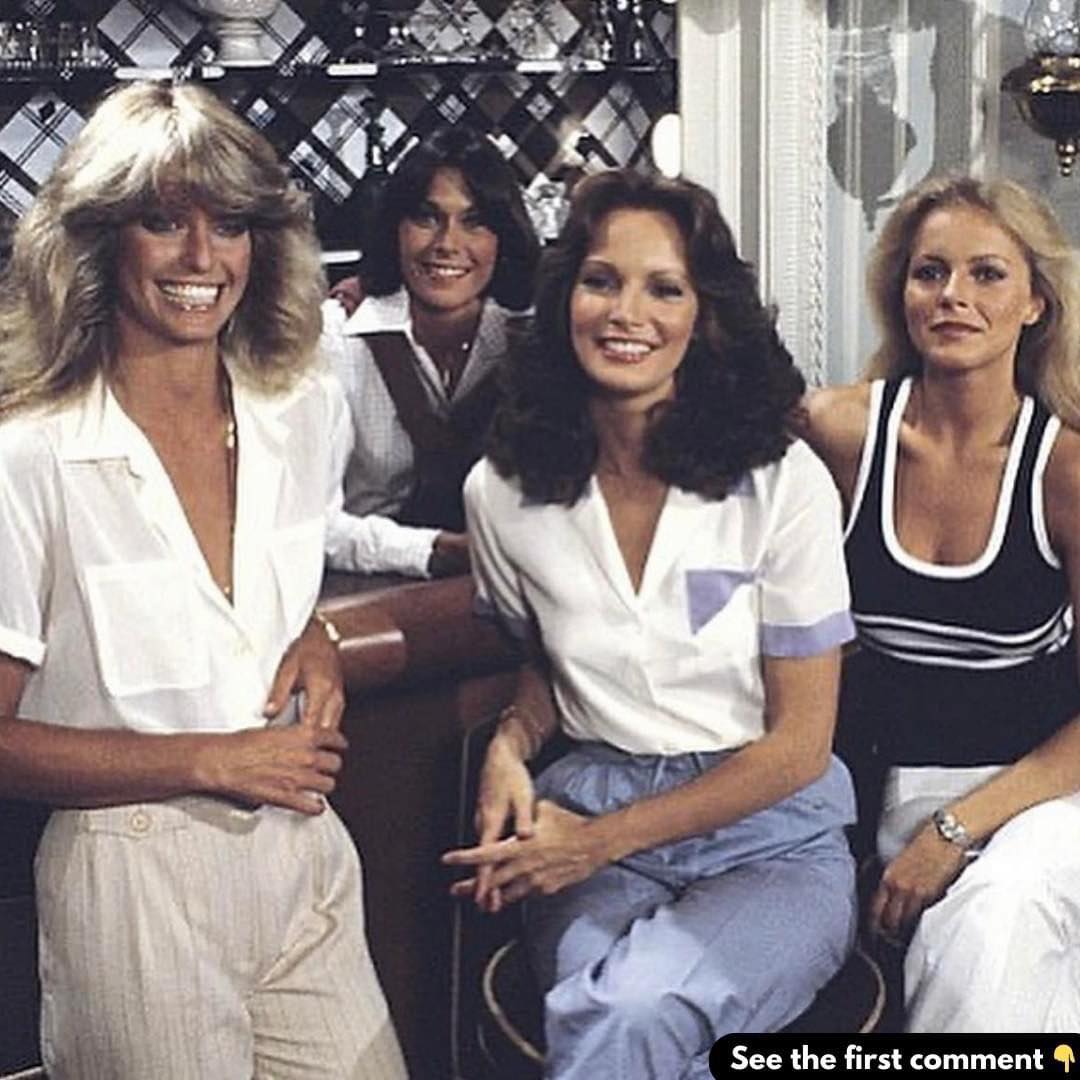When Charlie’s Angels first aired in 1976 (not 1967, as often misreported), television would never be the same again. For the first time, audiences around the world saw women not as supporting characters or damsels in distress, but as the stars—confident, capable, and unapologetically glamorous.
Created by Ivan Goff and Ben Roberts, the show featured three women—Farrah Fawcett as Jill Munroe, Kate Jackson as Sabrina Duncan, and Jaclyn Smith as Kelly Garrett—working for the mysterious, unseen Charlie Townsend. These “Angels” solved crimes, outsmarted criminals, and challenged conventions, all while redefining what a female hero could look like on television.
A Revolution in Television

When Charlie’s Angels premiered, the television landscape was still dominated by male-led dramas and detective shows. Women were often relegated to secretarial or romantic roles, their presence ornamental rather than essential. The Angels changed that overnight.
They were private investigators—smart, resourceful, and fearless. Each episode combined mystery, action, and humor, creating a formula that quickly captured millions of viewers. The blend of excitement and fashion-forward styling gave the show a modern, youthful edge, resonating deeply with audiences of the late 1970s.
The Angels were not just fictional detectives—they were cultural icons. They wore bell-bottoms, wielded guns, and delivered justice, all while maintaining an effortless sense of style. Their independence and intelligence made them role models for a generation of women growing up in a time when female empowerment was beginning to take center stage.
The Faces That Defined an Era

The original trio became instant household names. Farrah Fawcett, with her signature blonde hair and megawatt smile, became an international phenomenon—her 1976 swimsuit poster still remains one of the best-selling of all time. Jaclyn Smith embodied grace and sophistication, while Kate Jackson’s level-headed intelligence anchored the team.
But as with any long-running series, change was inevitable. Fawcett left after the first season, replaced by Cheryl Ladd as Kris Munroe, Jill’s younger sister. Later, Kate Jackson exited and Shelley Hack joined as Tiffany Welles, followed by Tanya Roberts as Julie Rogers in the show’s final season. Despite these changes, Jaclyn Smith remained a constant presence, the only original Angel to stay from beginning to end.
Each transition brought a new energy, allowing the show to evolve with its time. Even as cast members changed, the spirit of Charlie’s Angels—women supporting women, breaking barriers, and solving problems with both wit and courage—remained intact.
More Than Style and Glamour

While the show became famous for its glamorous image—often referred to by critics as “jiggle TV” due to its focus on fashion and allure—it was far more significant than its detractors admitted. The Angels were among the first female TV characters who were entirely self-reliant. They weren’t wives, mothers, or assistants. They were professionals—detectives who made decisions, took risks, and controlled their own destinies.
In a decade defined by the feminist movement, Charlie’s Angels embodied a new kind of empowerment. For young women watching at home, the show was proof that femininity and strength could coexist. They didn’t have to choose between being stylish and being serious, between being beautiful and being brave.
Cultural Influence and Legacy
By its second season, Charlie’s Angels ranked among television’s top 10 most popular programs. It inspired fashion trends across the country—feathered hair, wide-lapel blouses, and tailored suits became the uniform of empowerment. Girls emulated the Angels’ confidence, while advertisers rushed to capitalize on their image.
However, by the early 1980s, the show began to lose momentum. Plots became repetitive, and critics argued that it leaned too heavily on glamour at the expense of storytelling. The finale, Let Our Angel Live (1981), marked the end of an era—but not the end of its influence.
In truth, Charlie’s Angels paved the way for countless female-led series that followed, from Alias and Buffy the Vampire Slayer to Killing Eve and Scandal. The Angels proved that audiences would tune in to watch women take charge—and that strong female leads could drive ratings and cultural conversation alike.
Hollywood Revives the Angels
The power of Charlie’s Angels didn’t fade with time. In 2000, the franchise returned to the big screen with a stylish reboot starring Cameron Diaz, Drew Barrymore, and Lucy Liu. The film injected more humor, higher-octane action, and a 21st-century sense of sisterhood. It was a hit—earning over $260 million worldwide—and its 2003 sequel, Charlie’s Angels: Full Throttle, kept the momentum going.
While critics debated its over-the-top style, audiences loved seeing women dominate the action genre with charisma and wit. The trio’s chemistry—and the film’s message that teamwork and loyalty mattered most—reignited interest in the original series.
In 2011, ABC attempted a TV reboot, but it lasted only seven episodes before cancellation. The magic of the original proved difficult to replicate. Then, in 2019, another film reboot arrived, starring Kristen Stewart, Naomi Scott, and Ella Balinska, directed by Elizabeth Banks. Though it underperformed at the box office, it modernized the Angels for a new generation, emphasizing global collaboration, diversity, and independence.
The Lasting Power of the Angels
More than four decades after its debut, Charlie’s Angels continues to be referenced, revived, and celebrated. It remains one of the most recognizable television brands in pop culture history. But beyond the name and the nostalgia, its true legacy lies in what it represented: a shift in how women could be portrayed on screen.
Before the Angels, most TV heroines were supporting characters; after them, they were leaders. Before the Angels, women rarely carried entire franchises; after them, they became the driving force behind some of Hollywood’s biggest successes.
The Angels’ blend of intelligence, beauty, and bravery helped dismantle stereotypes that limited female characters for decades. They were proof that women could be complex—vulnerable yet strong, glamorous yet grounded, lighthearted yet formidable.
Conclusion: The Angels’ Legacy Lives On
Charlie’s Angels was more than a show about three detectives—it was a cultural awakening. It arrived at the perfect moment in American history, when society was beginning to reimagine gender roles and women were fighting for equality in every sphere. Through charm, courage, and undeniable charisma, the Angels brought that revolution into living rooms across the world.
Today, as new generations discover the show through streaming platforms and film revivals, its message still resonates: that empowerment wears many faces, and heroism isn’t confined by gender.
In the end, Charlie’s Angels wasn’t just television—it was transformation. A reminder that sometimes, breaking boundaries can be as simple—and as bold—as three women walking into danger together, ready to save the day.
Sources:
-
Smithsonian Magazine – “Charlie’s Angels and the Rise of Female Action Heroes”
-
The Guardian – “How Charlie’s Angels Changed TV Forever”
-
BBC Culture – “The Legacy of Charlie’s Angels: Fashion, Feminism, and the Female Hero”
-
Variety – “From Farrah to Kristen Stewart: The Evolution of Charlie’s Angels”
